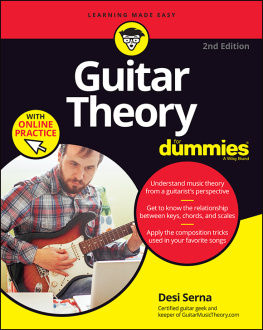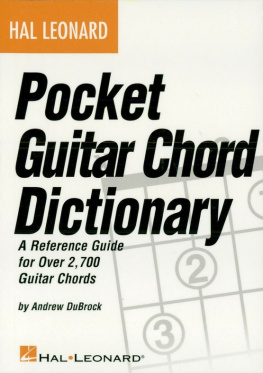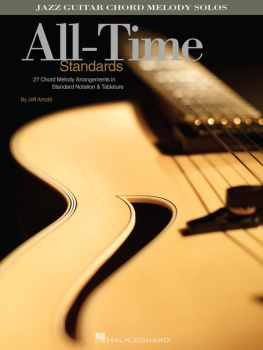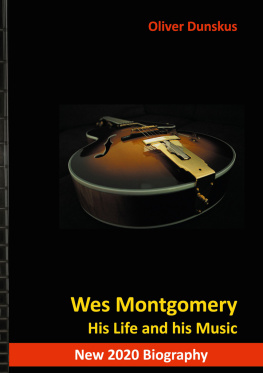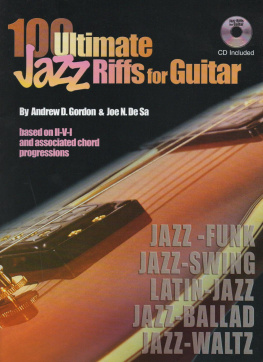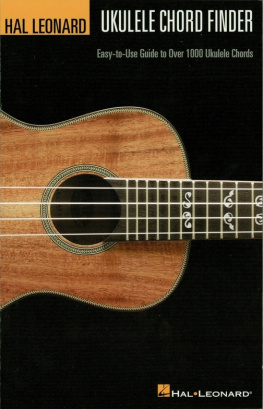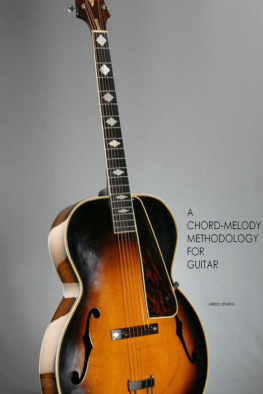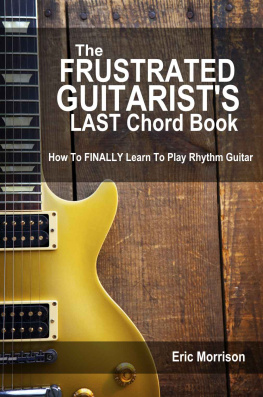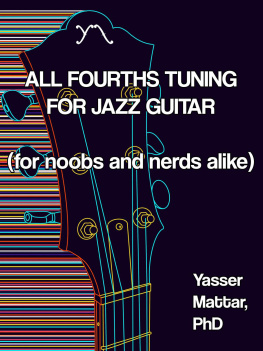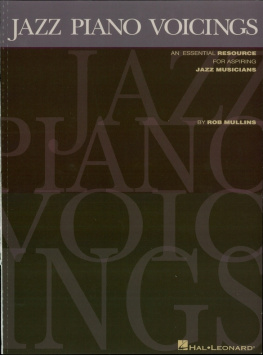JAZZ GUITAR VOICINGS: VOL 1
THE DROP 2 BOOK
by Randy Vincent
(Adapted from Mark Levines The Drop 2 Book)
Music Engraving - Chuck Gee
Cover Graphics - Attila Nagy
Cover Artwork - Sueann Bettison Sher
Cover Photos - Kathy Vincent
2009 Sher Music Co., P.O. Box 445, Petaluma, CA 94953
www.shermusic.com. No part of this book or audio CD may be reproduced
in any form without written permission from the publisher.
All Rights Reserved. International Copyright Secured.
ISBN 1-883217-64-4
NOTES TO USERS OF THIS DIGITAL BOOK
1) Unauthorized duplication, uploading, file-sharing, freedownloading,
copying or distribution of any kind of this digital book constitutes theftof
our intellectual property and is expressly prohibited without written
permission fromthe publisher.
2) The audio portion of this book is available for free download
athttp://www.shermusic.com/new/downloads.shtml. See the left-hand sidebar of our homepage.
Dedication
To my teacher the late Park Hill, my guitar heroes including Jim Hall, Wes Montgomery, and George Benson among many others, and my harmonic inspirations Thelonious Monk, Barry Harris, Bill Evans, Herbie Hancock, Debussy, Stravinsky, etc. etc. etc.
Acknowledgments
SPECIAL THANKS TO:
Chuck Sher, for his encouragement and for making this project possible.
Mark Levine, for creating the idea for this book in the first place.
Chuck Gee, for the fantastic music engraving and great advice.
About the Author
Randy Vincent has had a long and illustrious career in jazz. He has performed, toured and/or recorded with Dizzy Gillespie, Joe Henderson, Bobby Hutcherson, Bebop And Beyond, The Turtle Island String Quartet, and many others.
Randy has taught jazz guitar at Sonoma State University since 1981 and has conducted clinics throughout the US and overseas. Some of his more well-known former students include Julian Lage, Dave MacNab, Chris Pimentel, and Liberty Ellmen. He currently teaches at Sonoma State University and privately.
He has performed at numerous jazz festivals including the Monterey Jazz Festival and Dizzy Gillespies 75th birthday celebration at the Hollywood Bowl, as well as performing regularly with the Santa Rosa Symphonys Pops Concerts.
A selected discography of Randys recordings:
Randy Vincent - Nishas Dream and Mirror Image
Bobby Hutcherson - Ambos Mundos
Bebop And Beyond - Bebop And Beyond Plays Dizzy Gillespie (featuring Dizzy) and Bebop And Beyond Plays Thelonious Monk (featuring Joe Henderson)
Stephanie Ozer - O Comeco (featuring Leny Andrade)
Larry Baskett Trio - Chalice and Poor Boy Blue
Mel Graves - Emotion In Motion
Turtle Island String Quartet - Spider Dreams
Peter Welker - Para Peachy, Well Be Together Again and Shining Hour
Vern Thompson - Passions Of The Heart, Sea Of Dreams and Convergence (featuring Bob Sheppard, Akira Tana, Tony Dumas and Billy Childs)
Mike Vax Big Band - Alternate Route
Dave Eshelmans Garden Big Band - Milagros Journey
About This Book
I was practicing my guitar one day (just like every other day) when the phone rang. I answered thinking it might be a gig, but instead it was Chuck Sher saying he just got a call from Mark Levine, author of The Jazz Piano Book, The Jazz Theory Book, and Jazz Piano Masterclass - The Drop 2 Book. Mark said that a guitarist had called to report that he had learned more about harmony from Marks Drop 2 book than he had from any guitar book. Well, I have to agree, as Ive had the same experience with all of Marks books. Mark and Chuck discussed the possibility of a guitar version of the Drop 2 book, and then Chuck gave me a call. He had been encouraging me to write something for a while, but I just kept practicing and playing. This time, however, with a specific concept in mind, I decided to take him up on his offer. Chuck gave me the freedom to borrow freely from Marks work, as well as the freedom to expand on the concept and make it my own contribution.
This book focuses on drop 2 voicings for jazz guitar, and only uses examples of other types of voicings to clarify our understanding of the nature and usefulness of the drop 2 system. Therefore the Vol.1 in the title, so we can cover many other equally interesting and useful concepts in the future. The chapter layout is roughly patterned after Marks book, and like Marks book the concept is explained and defined by examples in the body of the text. Like most things worth doing, this book will require a lot of hard work, but the results will be most rewarding.
About Guitar Notation and Chord Diagrams
This book uses standard guitar music notation supplemented with standard fingerboard diagrams to help make it easier for less experienced readers to determine where to finger the voicings. Guitar music sounds one octave lower than written (compared to piano music), enabling the music to be written entirely in treble clef. Occasionally (such as Example 1-1) the music will be marked 8va, making it sound an octave higher than standard guitar pitch. This is usually done to reduce the number of high ledger lines, making the voicings easier to read. In the fingerboard diagrams the vertical lines represent the strings (low E-A-D-G-B-high E left to right) while the horizontal lines represent the frets, with the lowest fingered fret numbered on the upper right side of each diagram. When a chord is played in the first or open position, the heavier horizontal line across the top of the diagram represents the nut. Fingerings are not given because many of the forms can only be played one way, while the others should be fingered the way that works best for you.
CHAPTER 1 - GETTING STARTED WITH DROP 2
Play (CD1 Track #1), the first four bars of Kenny Dorhams Blue Bossa. This is the sound of drop 2.
Ex. 1-1

Play (CD1 Track #2), the same four bars of Blue Bossa, this time with drop 2 tweaked a bit to make it sound more interesting.
Ex. 1-2

This book covers both the basic version of drop 2, demonstrated in .
Block Chords
The previous fragments are examples of what arrangers and jazz musicians commonly refer to as block chords. The term refers to having a similarly voiced block of harmony under each note of a melody. Notice I said under each note of a melody. Block chords build the harmony from the top down, rather than from the bass note up, and are usually used in conjunction with another instrument supplying the bass line. This way the melody is the highest, or soprano, voice in the chord. The melody may be the melody of a tune, or part of an improvised solo line, or a background melody accompanying a tune or solo played by someone else.
You need to know at least a little jazz harmony to make sense of this book: chord construction (the notes that make up a given chord), and the II-V-I progression.
Block chords frequently involve four voices, the melody note and three harmony notes, that move in approximate parallel motion, keeping the spacing between the notes roughly similar. However, the voicing types used may vary. For instance a block chord passage may use all 4-way close voicings, or all drop 2 voicings, or all Shearing Style, etc. A passage in drop 2, for instance, may have an occasional 4-way close or an occasional drop 3 without compromising the block chord effect, but in general its best not to randomly mix a bunch of widely contrasting voicings.


